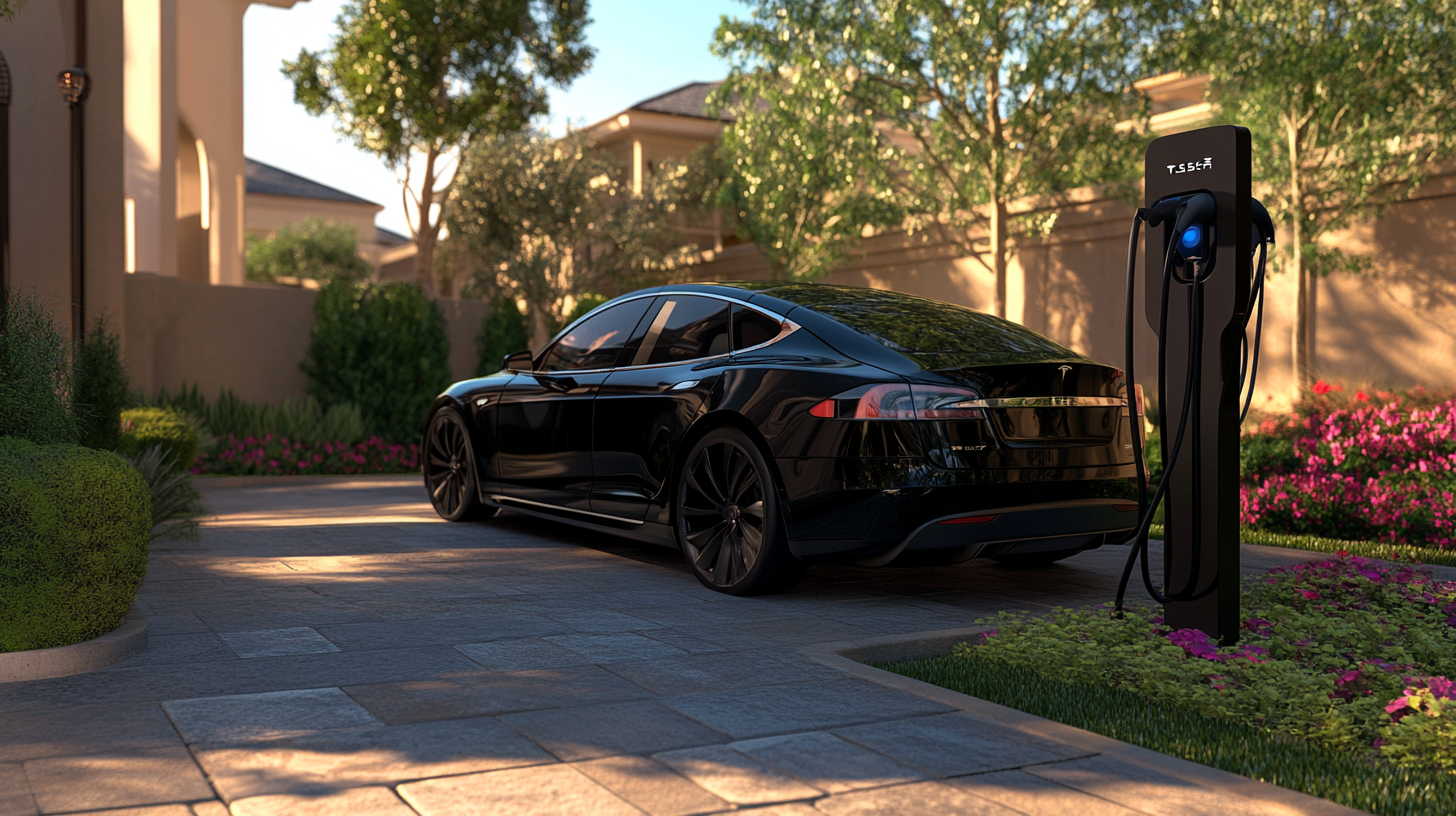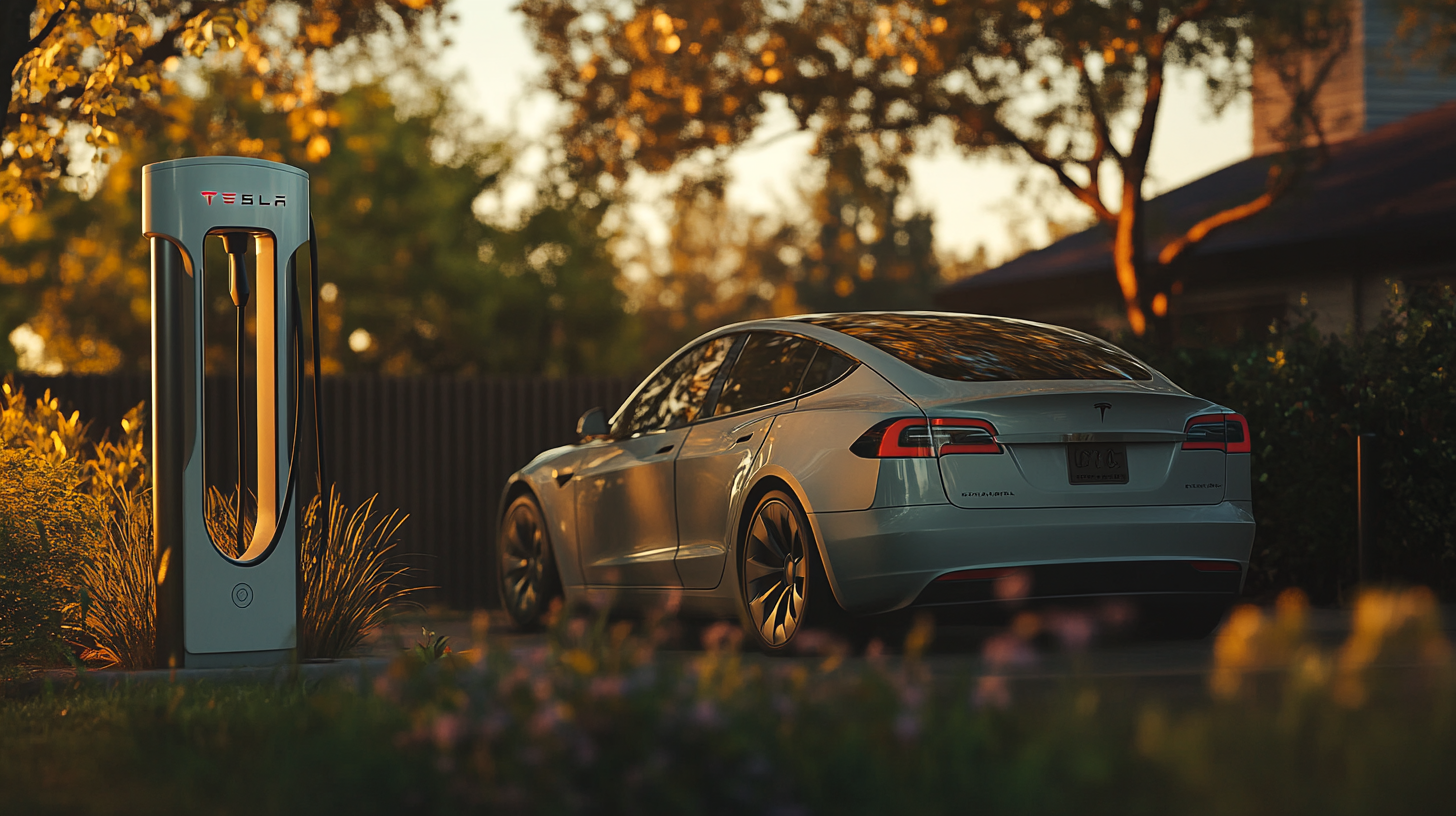As the electric vehicle (EV) market continues to accelerate, the demand for efficient and reliable charging solutions has never been greater. The Project EV Charger stands at the forefront of this evolution, presenting unique opportunities and challenges for industry stakeholders. According to the International Energy Agency (IEA), global EV sales surged by 108% in 2021, highlighting the urgent need for robust infrastructure to support this growth. However, existing industry standards for EV chargers often lead to discrepancies in performance and accessibility, as noted in a recent report by the Electric Power Research Institute (EPRI), which emphasizes the critical issues surrounding compatibility and user experience. In this comprehensive guide, we will delve into alternative solutions to optimizing the Project EV Charger, aiming to address these industry problems while ensuring that charging stations meet the evolving needs of consumers and provide a seamless charging experience.

As electric vehicles (EVs) continue to gain traction in the market, the importance of effective EV charging solutions becomes increasingly apparent. According to a report by BloombergNEF, it is projected that by 2040, electric vehicles will account for 58% of new passenger vehicle sales globally. This shift underscores the critical need for robust charging infrastructure to support the growing number of EVs on the road.

For businesses and homeowners considering EV chargers, understanding the types of available solutions is essential. A recent study by the International Energy Agency highlights that fast chargers can deliver up to 80% battery capacity in just 30 minutes, making them ideal for public charging stations. In contrast, Level 2 chargers, typically found in residential settings, offer a more economical option with charging times that range from four to eight hours.
Tips: When selecting an EV charger, consider its charging speed and compatibility with your vehicle model. Additionally, evaluating installation costs and available incentives can significantly influence your choice. Investing in a solar-powered EV charger can further enhance sustainability while reducing utility expenses. Being well-informed about different charging options not only ensures a seamless transition to electric mobility but also aligns with the growing demand for eco-friendly solutions.
When selecting the best EV charger for your project, several key features warrant careful consideration. Firstly, charging speed is crucial; look for chargers that offer different power levels. Level 2 chargers, for instance, can significantly reduce charging time compared to standard Level 1 options. Assessing the charging time according to your project's needs can help determine the most efficient solution.
Another vital aspect is compatibility with various electric vehicle models. Ensure that the charger you choose supports a range of electric vehicles, including different connectors and protocols. This flexibility not only enhances usability but also future-proofs your investment as EV technology continues to evolve. Moreover, consider the charger’s durability and warranty, as these features can impact your long-term satisfaction and cost-effectiveness. Investing in a robust charger with comprehensive support can save money and hassle down the road.

When it comes to charging electric vehicles (EVs), there are various options beyond the typical Level 1 and Level 2 chargers that can meet diverse needs. Exploring alternative EV charger types reveals unique benefits that are tailored for specific contexts. One standout option is the DC Fast Charger, which significantly reduces charging time, making it ideal for highway rest stops or commercial fleets that require quick turnaround. With the capability to deliver rapid charging, these units can provide a substantial charge in just 30 minutes, appealing to those with tight schedules.
Another impressive alternative is the Solar EV Charger. This innovative solution harnesses renewable energy, allowing EV owners to charge their vehicles sustainably. By leveraging solar panels, users can often reduce their electricity bills and minimize their carbon footprint. Additionally, for those living in areas where traditional grid power is less reliable, solar chargers can provide a dependable source of energy. Finally, the Wireless EV Charger, which utilizes inductive charging technology, offers unparalleled convenience by eliminating the need for physical cables. This touchless approach not only enhances user experience but also ensures that EVs stay charged without the hassle of plugging in, making it an attractive option for modern drivers.
| EV Charger Type | Charging Speed | Installation Type | Cost Range | Unique Benefits |
|---|---|---|---|---|
| Level 1 Charger | 5-20 miles/hour | Home | $300 - $600 | Easy to install, no special equipment needed |
| Level 2 Charger | 10-60 miles/hour | Home/Commercial | $500 - $2,500 | Faster charging, ideal for daily use |
| DC Fast Charger | 60-100 miles/30 minutes | Commercial | $10,000 - $50,000 | Very quick charging for longer trips |
| Wireless Charger | Varies | Home/Commercial | $3,000 - $10,000 | Convenient, no plugs needed |
| Solar-Powered Charger | Varies | Home/Off-Grid | $1,000 - $5,000 | Sustainable, reduces electricity bills |
As the electric vehicle (EV) market continues to grow, the demand for efficient and cost-effective charging solutions has never been more critical. In urban areas, finding a suitable charging station can be a challenge due to congestion and limited space in underground garages. Traditional fixed charging stations often require complex installations, making them less viable for rapid scaling as electric vehicle ownership increases. Thus, exploring alternative solutions, such as mobile charging technologies, is becoming increasingly important to meet the evolving needs of consumers.
A recent industry report projects that the market for EV supply equipment will reach approximately $484.18 billion by 2032, showcasing a compound annual growth rate (CAGR) of 29.2% between 2022 and 2032. This signals a growing recognition of the need for diverse charging options that balance cost-effectiveness and accessibility. Additionally, the AC EV charging station market alone is expected to exceed $19.3 billion by 2024, driven by technological advancements and governmental support. By comparing various EV charger options for different projects, stakeholders can make informed decisions that enhance the overall efficiency of electric vehicle charging infrastructure.
As the electric vehicle (EV) market continues to grow, future trends in EV charging technology are playing a critical role in shaping project planning and implementation. Innovations such as ultra-fast charging stations, wireless charging, and integration of renewable energy sources are becoming increasingly relevant. These advancements not only reduce downtime for drivers but also enhance the sustainability of charging solutions.
When considering EV charger projects, it is essential to incorporate flexibility in planning. Future-proof solutions should accommodate technological advancements, ensuring that the infrastructure can adapt to new charging options and evolving user needs. Moreover, collaborating with technology providers early in the planning stages can offer insights into upcoming innovations that could improve efficiency and accessibility.
Tip: Always conduct a thorough market analysis to understand regional EV adoption rates and anticipated growth. This data-driven approach can significantly influence your project's location, design, and capacity. Additionally, consider implementing smart charging technologies that optimize energy use during peak and off-peak times, ultimately leading to cost savings and improved grid management.








